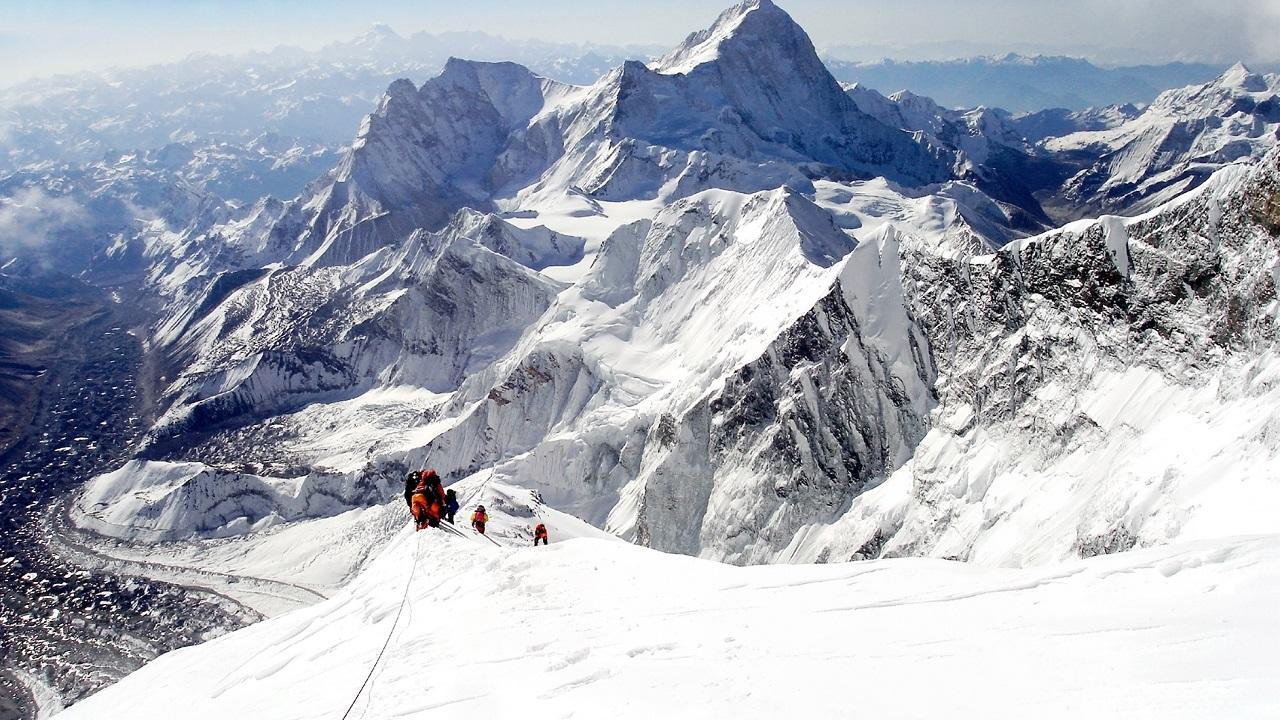Experts ask researchers, scientists to keep an eye on this, amid possibility of new pandemics caused by these unknown microbes if released

Representative Pic. Istock
A recent study in the journal Nature Biotechnology which stated that “never before seen microbes locked in glacier ice could spark a wave of new pandemics when released” has left health experts concerned.
ADVERTISEMENT
Dr Wiqar Shaikh, professor of Medicine at Grant Medical College and Sir JJ Group of Hospitals, said that he was stunned to read the paper, funded by the Chinese Academy of Science, published on June 27 by Chinese research scientists from Lanzhou University. He said that scientists took ice samples from 21 glaciers in the Tibetan plateau and found 968 microbial species frozen in ice and that 98 per cent of these are completely new to science and could be around 10,000 years old.
Stating that the climate crisis and global warming boosts chances of these potentially dangerous microbes leading to new pandemics, he added that there is also a chance of genetic interaction between these microbes with existing ones, which could prove to be even more fatal. He also pointed out that the Tibetan plateau glaciers feed fresh water into several rivers in China and India, the two most populated countries, and added that pandemics spread quickly in populated areas.
Dr Shaikh also cited another study published in the journal Nature on April 28, 2022 by researchers from Georgetown University in the USA which concluded that at least 10,000 virus species have the ability to infect humans, but are currently circulating silently in wild animals. He said that because of climate change, wild animals will be forced to relocate their habitats, most likely to regions with large human populations, thus increasing the risk of viral jumps and spillovers that could lead to the next pandemic.
“With these studies warning us of more pandemics, we all need to view this matter very seriously. World leaders need to sit up and take notice of these landmark studies and their rather dangerous predictions that could affect mankind very badly in the near future,” he said. Speaking about possible solutions, he quoted an article from the journal Science, published by Harvard School of Public Health in the USA, which enlisted 3 ways to prevent the next pandemic—reducing deforestation, limiting global wildlife trade and increasing surveillance and early virus detection.
Climate change, its effects
“The study of viable microorganisms in glaciers is relatively a new branch of ecological science. The understanding of how bacteria and viruses spring back to life as glaciers start to melt due to climate change is not complex. As glaciers all over the world are melting at an alarming rate, the released microbes could travel with the meltwater into rivers and streams and reach populated areas, infecting plants, animals and people. The glaciers in the Tibetan plateau feed several rivers that lead to densely populated regions of China and India. The study of ecology is further expanding into new vistas, as old bacteria and viruses that are older than 15,000 years come in contact with modern organisms and humans that could lack immunity to these microorganisms causing new pandemics. This also explains why the 21st Century is being labelled as the Century of Pandemics,” said Dr Subhash Hira, professor of global health at the University of Washington-Seattle.
He added, “For example, researchers had found an outbreak of anthrax in Siberia five years ago that is believed to be the result of the pathogen preserved in reindeer skeletons. Frozen for decades, the bodies thawed out of the ground during an exceptional heatwave, releasing infectious anthrax spores.”
Need more research
“More research and development from the scientific community might provide more concrete evidence, which might be crucial for strengthening public health systems globally,” Dr Hira said. Dr Jacob John, veteran virologist from Tamil Nadu, said, “We don’t know much about these viruses and bacterias living in glaciers and deep seas, and remote places. It is important we upgrade our research and development. Climate change will definitely unravel microbes we did not see in the past. But I don’t think these can have as deadly an effect as SARS-CoV-2 because these are not animal bacteria or viruses like SARS-CoV-2.”
968
No. of microbial species found
 Subscribe today by clicking the link and stay updated with the latest news!" Click here!
Subscribe today by clicking the link and stay updated with the latest news!" Click here!








